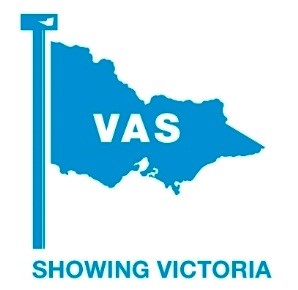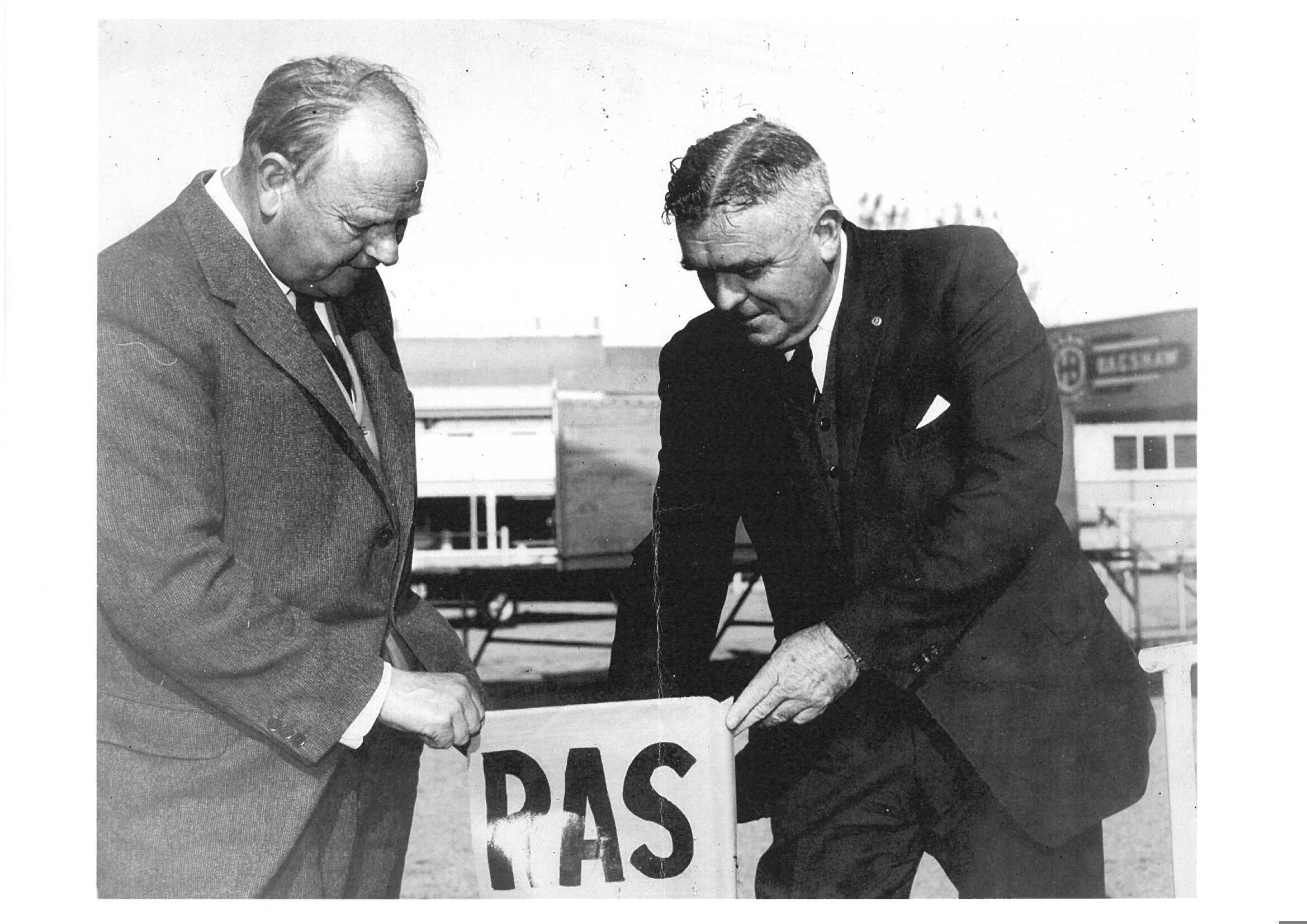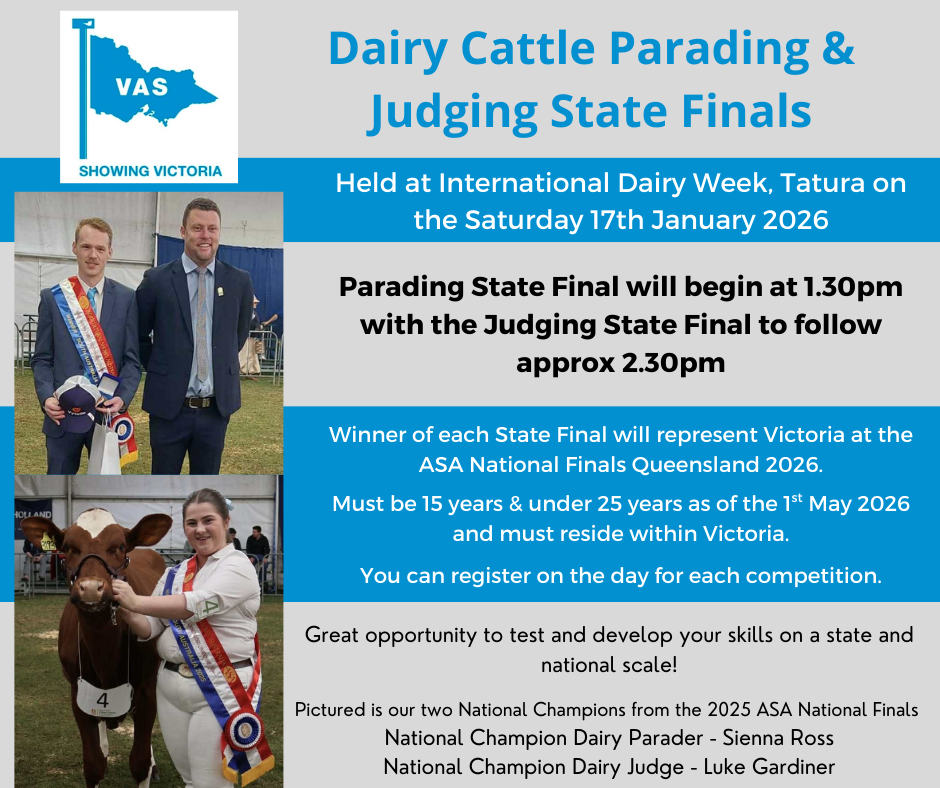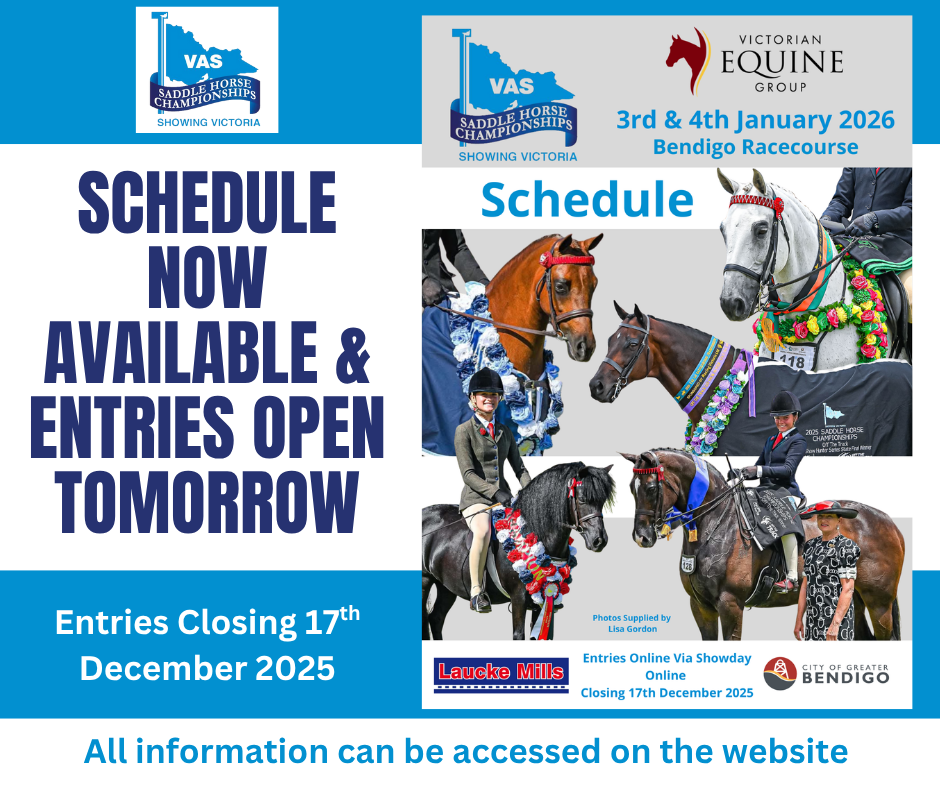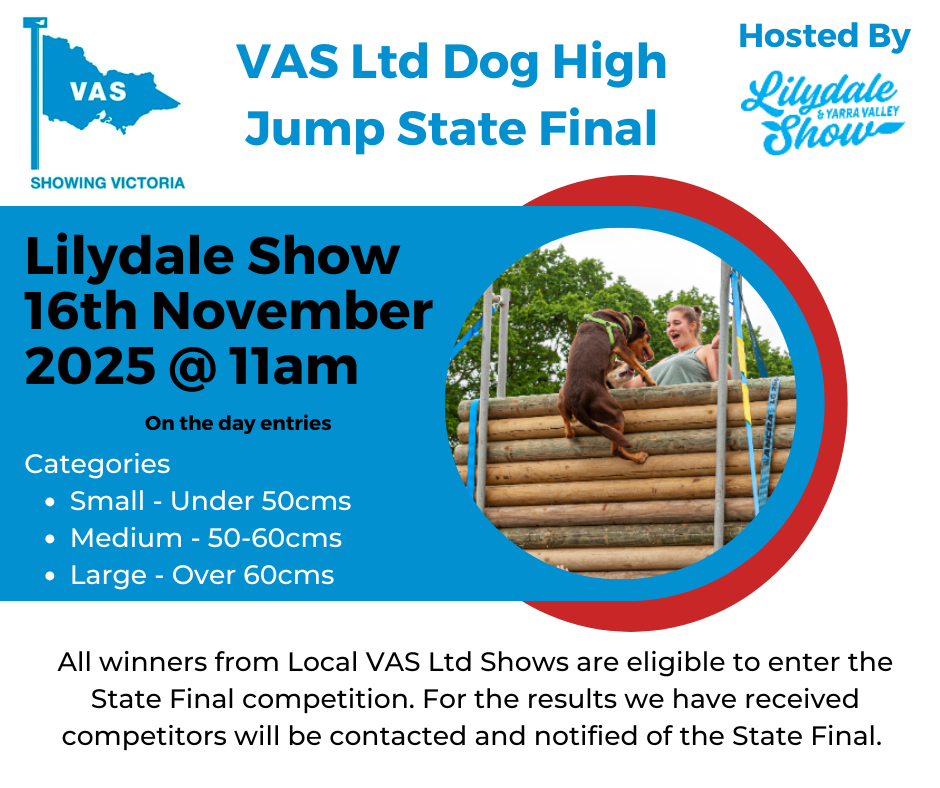History tells us that shortly after settlement of the Port Phillip District in 1835 agricultural societies first came into being with the establishment of the Pastoral and Agricultural Society of Australia Felix in January 1840 and the Society’s first and only Show of livestock, samples of wool, implements of husbandry, agricultural and horticultural produce was held on 3 March 1842 in the Melbourne Cattle Market (intersection of Elizabeth and Victoria Streets), unfortunately this was a failure.
By 1848 resources had increased and enthusiasm and support had revived sufficiently in the Port Phillip District for settlers to once again start thinking of organising agricultural competitions, similar to those held in the United Kingdom from whence they had come. It would appear that an organization calling itself the Moonee Ponds Farmers’ Society had originated amongst a few farmers on the Moonee Ponds and had been conducting ploughing matches in an area near the Moonee Ponds Creek prior to 1848. On 18th August 1848 the Moonee Ponds Farmers’ Society changed its name to the Port Phillip Farmers’ Society. In an attempt to effect an improvement in the standard of ploughing in the colony the PPFS resolved to hold their first ploughing match on La Rose farm, Moonee Ponds in 1848.
On 1st July 1851 Victoria was declared a separate colony to New South Wales and July 1 is now recognised as Victoria Day.
In 1857 the Government indicated to the PPFS its wish that a body representing the agricultural interests of all parts of the colony be established. This suggestion was agreed to in February 1858 and in May of that year a letter was sent to all existing agricultural societies with a view to securing the formation of a Board or Council of Agriculture. This invitation was met with a ready response and as a result in July 1859 a Board of Agriculture was established.
Unfortunately the Port Phillip Farmers’ Society declined and held its last show in 1867. Almost simultaneously came problems with the Board of Agriculture and the Council of the Board submitted its final report in 1869. In 1870 the Board of Agriculture was disbanded by the Board of Agriculture Abolition Bill.
In June 1870 the PPFS vested its assets in trustees with power to transfer them to an approved new agricultural society, founded on a national basis “similar to the Royal of England or the Highland Society of Scotland”.
Following a public meeting in November 1870 it was resolved that a new Society be formed called the National Agricultural Society of Victoria. More than twenty years later further efforts were made by the NASV to re-establish a body representative of all the agricultural societies, similar to the Board of Agriculture. This new organization eventually became the Victorian Chamber of Agriculture and operated from 1900-1965. The Chamber of Agriculture, as does VASA/VAS, held a conference in a different part of the State each year.
In May 1890 the title “Royal” was bestowed and the National Agricultural Society of Victoria became the Royal Agricultural Society of Victoria with its offices situated in Temple Court, Collins Street, Melbourne.
In 1952 Tom Tehan, representing the Seymour Society, supported by W.B. Richardson, from the Wangaratta Society, moved that an agricultural section be set up within the Chamber of Agriculture. This section was made up of 11 representatives of agricultural societies, with secretarial services being provided by the RASV.
In 1953 H.T.C. (Colin) Woodfull, was appointed Secretary of the RASV, he forged a closer association with country agricultural societies, and was keen to have them participate in joint competitions with the RASV. One of his first reforms was to delegate duties and responsibilities to senior staff members and this led to a more efficient staffing situation.
In 1962 Colin Woodfull could foresee the waning influence of the Chamber of Agriculture and organized meetings with agricultural society representatives to discuss matters of mutual interest and concern. A meeting of the Agricultural Societies Committee was held on 26th July 1962, in attendance were F.H. Ruler (who had been re-elected Chairman), F.J. Leete, M. Russell (Horsham), W.G. Pope (Donald), E. Smith (Warragul), M.J. Garner (Cohuna and Northern Districts), J. MacLachlan (Sale), E. Payne (Whittlesea), J.W. Rae (Dandenong), H.F. Klem (Wangarratta), A.M. Zwar (Kilmore) and T. Tehan (Seymour). On 23rd January 1963 a further meeting of representatives of agricultural societies was held, these meetings set the stage for the formation of the Victorian Agricultural Societies’ Association.
Pictured: Mr. Colin Woodfull OBE (1st Secretary VASA) & Mr. F.H. Frank Ruler (inaugural Chairman)
On 17th June 1964 a meeting of representatives of Victorian Agricultural Societies was held in the Administrative Building Royal Melbourne Showgrounds. The meeting was chaired by Colin Woodfull with 107 delegates representing approximately 85 agricultural societies in attendance. At this meeting the Chairman referred to the newly formed Victorian Agricultural Societies Association which came into being at the Chamber of Agriculture Convention held at Shepparton in April of that year when a proposed Constitution had been outlined.
It was moved J.W. Rae, seconded by M. Russell, that a one day convention of representatives from all country agricultural societies be held in the first week of December 1964. With the support of the Council and Staff of the RASV and great team work from many agricultural society members, a Special Convention of Delegates was held at the Melbourne Showgrounds on 10th December 1964. An invitation was forwarded to 137 societies and resulted in an attendance of 80 delegates from more than 50 societies.
At this Convention the proposed Constitution was adopted and early discussion was held on a Rain Protection Scheme, the setting up of groups of shows within districts, and subsequently in conjunction with the RASV, the establishment of competitions for farm, stock, cereals, and farm management along with the country Show Girl Competition which had commenced in 1957.
The senior staff member who was delegated the duties of looking after the administrative details of VASA was Geoff Norris who is quoted as saying “my work for VASA gave me my greatest sense of worth”.
In the first of year of operation the Office Bearers elected were:- President: F.H. (Frank) Ruler (Kyabram); Vice Presidents: T. (Tom) Tehan (Seymour), E. (Ted) Payne (Whittlesea), G.H. (Harry) Graham (Wangaratta).
Early in 1965 the workload undertaken included: Strengthening the ties between individual societies and their representative regional Groups; Developing close working relationships with the RASV, the Minister and Department of Agriculture; Maintaining two-way communication with affiliated societies and with other bodies having special interest for VASA.
With this in mind, production of a quarterly booklet was authorized. The first issue of “VASA” in June 1965, the printing of which was supported by the RASV; Shell; Commonwealth Banking Corporation; Nicholas; Victorian Tourist Bureau; and General Accident Insurance Corporation, contained: Positive comments from the President, Frank Ruler, and from the Minister of Agriculture, The Honourable G.L. Chandler; a profile of the 14 VASA Groups with names of their Council representatives and the Society Secretaries with contact details; a print-out of the Constitution; proposals to assist affiliated societies with Public Risk and Rain insurance; a calendar of remaining agricultural show dates for 1965 and a comprehensive section listing “approved” judging panels for livestock containing some 1,000 names.
Agenda items for discussion during 1965 included: 1. Reduction of late show entries and negotiations involved in show dates clashing; 2. Increased cattle compensation payments, more foot-rot inspectors, and 3. Grants for non livestock pavilions; all three were achieved through representations to the Minister; Co-ordination of drought relief fodder from member societies and possible use of country showgrounds for driver training to help combat the road toll; Representations toward the timing of school holidays during the Royal Melbourne Show - note: this didn’t happen until 1987; Discussions with the Showmen’s Guild for greater co-operation; and negotiations with the NSW and SA agricultural societies’ organizations to maintain goodwill over affiliation approaches from societies along state borders.
VASA became an incorporated body under the Associations Incorporation Act 1981 in April 1986. At the meeting of the Council of VASA held on 31st October 2002 a Resolution was passed to register a Company Limited by Guarantee of its Members under the Corporations Act to be known as Victorian Agricultural Shows Ltd, with an interim Board of Directors consisting of Marie Hendy, Robert (Bob) Johnson, Rosemary Garoni, Basil Kneebone, Peter Hicks, Rosemary Loughnan, Don Williams and George Nicholson. In May 2003 it was agreed that the VAS logo remain the same in design as the one used for VASA, however the words “Showing Victoria” to be placed under the logo.
